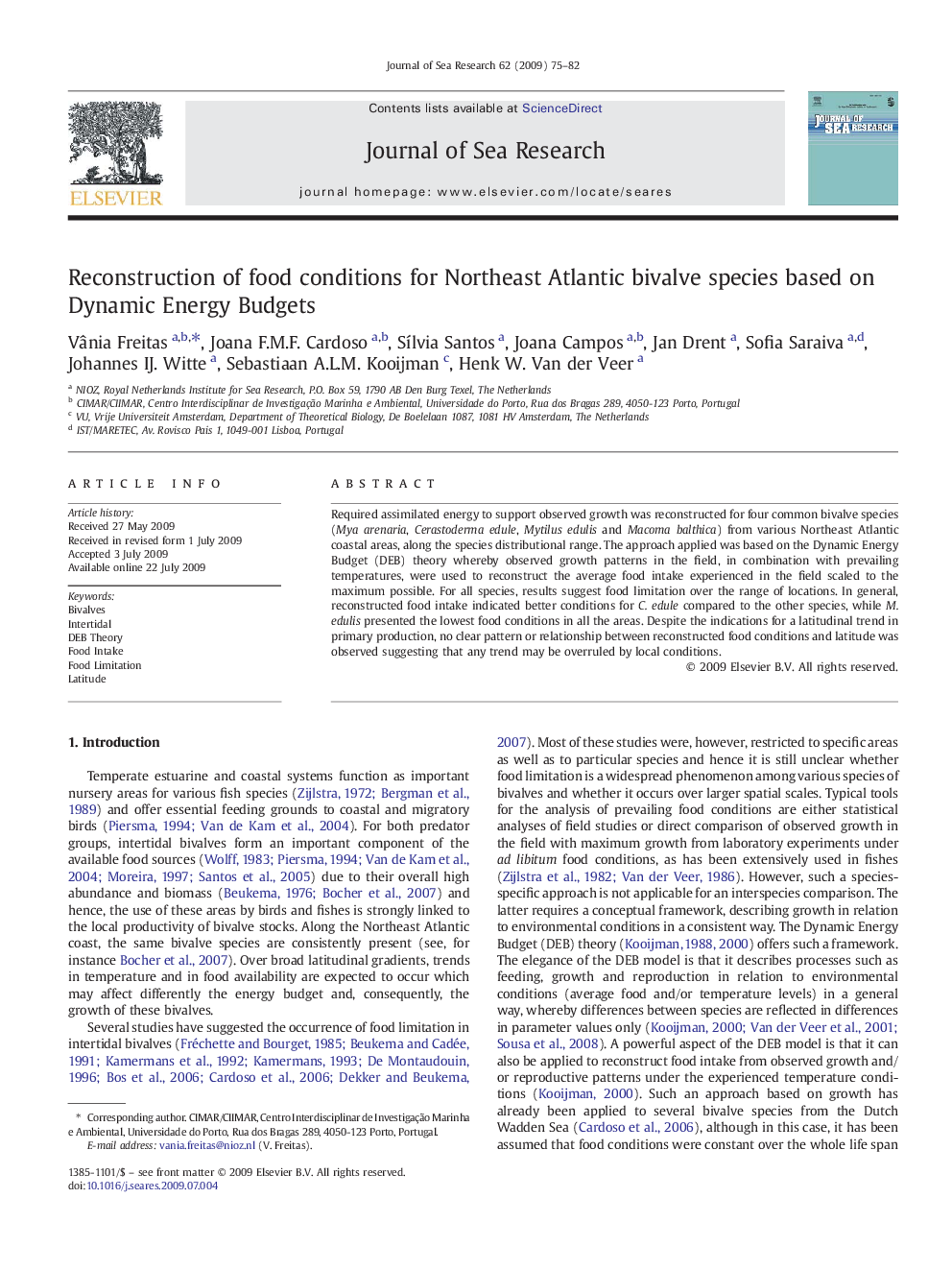| Article ID | Journal | Published Year | Pages | File Type |
|---|---|---|---|---|
| 4550287 | Journal of Sea Research | 2009 | 8 Pages |
Abstract
Required assimilated energy to support observed growth was reconstructed for four common bivalve species (Mya arenaria, Cerastoderma edule, Mytilus edulis and Macoma balthica) from various Northeast Atlantic coastal areas, along the species distributional range. The approach applied was based on the Dynamic Energy Budget (DEB) theory whereby observed growth patterns in the field, in combination with prevailing temperatures, were used to reconstruct the average food intake experienced in the field scaled to the maximum possible. For all species, results suggest food limitation over the range of locations. In general, reconstructed food intake indicated better conditions for C. edule compared to the other species, while M. edulis presented the lowest food conditions in all the areas. Despite the indications for a latitudinal trend in primary production, no clear pattern or relationship between reconstructed food conditions and latitude was observed suggesting that any trend may be overruled by local conditions.
Related Topics
Physical Sciences and Engineering
Earth and Planetary Sciences
Oceanography
Authors
Vânia Freitas, Joana F.M.F. Cardoso, SÃlvia Santos, Joana Campos, Jan Drent, Sofia Saraiva, Johannes IJ. Witte, Sebastiaan A.L.M. Kooijman, Henk W. Van der Veer,
